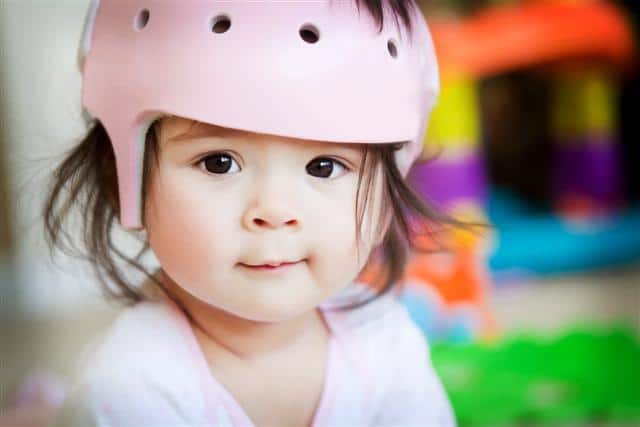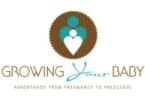As a parent, you want to give your baby the best start in life. You may have heard about baby helmet therapy and wondered when and if it’s needed for your child.
Launched back in 1994, the Back to Sleep campaign is an important initiative, known for reducing the risk of Sudden Infant Death Syndrome (SIDS). However, this recommendation has also led to an increase in flat head syndrome among babies.
Baby helmet therapy is a treatment option for infants with skull deformities that helps to improve their head shape and promote healthy development. There are a lot of questions about the process, its benefits, risks, costs, and more. This article looks at all of these questions along with information about the success rates and insurance information.
What is Baby Helmet Therapy and Why is it Important for Infant Development?
Baby helmet therapy, also called cranial remolding or orthotic therapy, is a non-invasive treatment that involves wearing a custom-made helmet that applies gentle pressure to the infant’s skull to correct skull deformities. It is an effective treatment for plagiocephaly (flat head syndrome), brachycephaly (wide head), and scaphocephaly (narrow head). The goal of baby helmet therapy is to promote healthy brain development, improve the infant’s head shape, and prevent long-term issues such as facial asymmetry or developmental delays.
What Conditions Need to be Corrected with a Baby Helmet?
Baby helmet therapy is typically recommended for infants who have moderate to severe skull deformities. These deformities can be caused by a number of factors, such as premature birth, multiple births, torticollis (a condition that causes stiffness in the neck muscles), or sleeping in the same position for too long. A pediatrician or a craniofacial specialist can evaluate the infant’s head shape and determine if baby helmet therapy is necessary.
Benefits of Baby Helmet Therapy
Besides improving the infant’s head shape and preventing long-term issues, baby helmet therapy can also improve the infant’s sleep quality, reduce the risk of ear infections, and improve feeding abilities. The therapy is safe, painless, and non-invasive. Additionally, it has a high success rate when started early and followed consistently.
When Should You Start Baby Helmet Therapy?
Baby helmet therapy is most effective when started early. The ideal time to start the therapy is between four and six months of age when the infant’s skull is still soft and malleable. However, the therapy can be started up to 12 months of age, depending on the severity of the deformity. The longer the baby wears the helmet, the better the results.
What is the Success Rate of Helmet Therapy?
The success rate of baby helmet therapy depends on several factors, such as the severity of the deformity, the age of the infant, and how consistently the therapy is followed. However, studies have shown that baby helmet therapy is successful in more than 90% of cases. The earlier and longer the therapy is started and followed, the better the results.
How Long Will My Baby Have To Wear The Helmet?
While every case varies, the average length of time a baby will need to wear their helmet is around 3-6 months, although it may be recommended for up to 12 months. It’s important to note that each baby’s situation is unique, and their helmet’s duration may differ depending on the severity of their condition and how well they respond to treatment.
How Long Does it Take for a Baby to Adjust to the Helmet?
It can take a few days to a few weeks for the baby to adjust to the helmet. Initially, the helmet may feel uncomfortable, and the infant may cry or fuss more than usual. However, most infants adjust well to the helmet and may even find it comforting. Parents can help the baby by providing extra comfort, distraction, and patience during the adjustment period.
How Do Babies Sleep with a Helmet?
Infants can sleep with a helmet on. The helmet is designed to be worn for 23 hours a day, only taken off for bathing or cleaning. The helmet should fit snugly but not be too tight, and the baby should never be left unsupervised while wearing the helmet. It is recommended that parents place the baby on their back to sleep and avoid placing any extra padding or blankets inside the helmet.
How Much Do Helmets for Babies Cost?
The cost of baby helmet therapy varies depending on the provider, location, and insurance coverage. On average, a custom-made helmet can cost anywhere from $1,500 to $4,000. This high cost is because the manufacturing process of a baby helmet for therapy requires a great deal of precision and specialized materials. Each helmet must be custom-made to fit the shape of the baby’s head, and the materials used must be both durable and lightweight. In addition to the materials, the cost of labor and technology used in the production process contributes to the overall expense.
Does Insurance Pay for a Baby Helmet?
Many insurance plans cover the cost of baby helmet therapy if it is deemed medically necessary. However, coverage varies depending on the plan, the provider, and the diagnosis. Parents should check with their insurance provider before starting the therapy to determine their coverage and benefits.
Tips on How to Make Baby Helmet Therapy More Comfortable for Your Infant
To make the baby helmet therapy more comfortable for your infant, you can:
- Choose a helmet with good ventilation and a comfortable lining.
- Use a soft washcloth to clean the helmet daily.
- Place a cotton bandana or cap under the helmet to absorb sweat and prevent irritation.
- Distract the baby with toys, music, or singing during the adjustment period.
- Provide extra comfort, such as holding, rocking, or massaging the baby.
Can You Fix a Baby’s Flat Head without a Helmet?
In some cases, mild cases of flat head syndrome can be corrected without a helmet. However, severe cases may require the use of a helmet to achieve the desired results. Other treatments for flat head syndrome may include repositioning the infant during sleep, tummy time, physical therapy, or corrective surgery.
Risks Associated with Baby Helmet Therapy and Safety Precautions to Take
Baby helmet therapy is generally safe, and serious risks are rare. However, some infants may experience mild side effects, such as skin irritation, redness, or sweating. Parents should monitor the infant’s skin for any signs of discomfort or infection and report any concerns to the therapy provider. It is important to follow safety precautions, such as never leaving the baby unsupervised while wearing the helmet, avoiding activities that may cause the helmet to fall off, and following the therapy schedule as prescribed.
Baby helmet therapy is a safe and effective treatment for infants with skull deformities that can promote healthy development, improve the head shape, and prevent long-term issues. By starting the therapy early and following it consistently, parents can ensure the best results for their child. While the therapy may involve some adjustments, discomfort, and costs, the benefits are well worth it. If you have any concerns about your infant’s head shape or development, talk to your pediatrician or a craniofacial specialist to determine if baby helmet therapy is right for your child.







